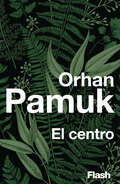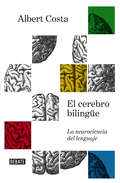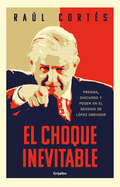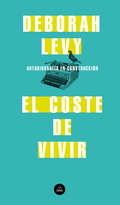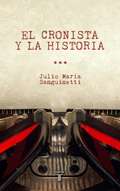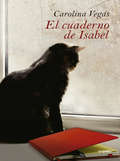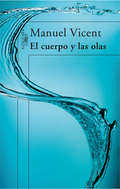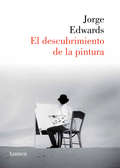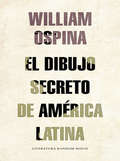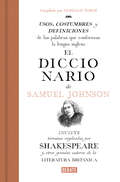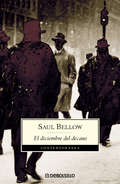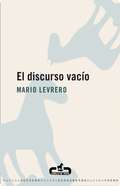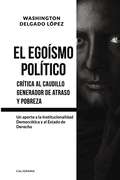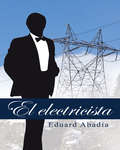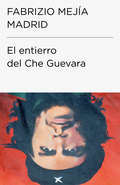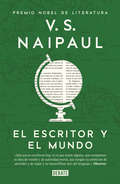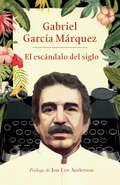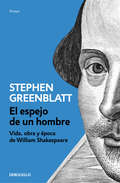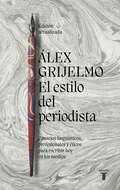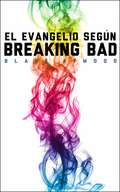- Table View
- List View
El centro
by Orhan PamukSi la novela es un bosque, el centro es la luz ambigua que lo ilumina. ¿Qué buscamos al leer novelas? ¿Escribimos con un motivo en mente? En El centro, una de las seis conferencias que Orhan Pamuk preparó para el seminario de Charles Eliot Norton de la Universidad de Harvard en 2009, el autor reflexiona sobre la tarea de escribir, así como el acto de leer. Para ello, analiza con brillantez las novelas de autores como Virginia Woolf, Faulkner, Dostoievski o Tolstói. El premio Nobel de Literatura defiende que leemos con la esperanza de encontrar las claves para entender la vida, claves que residen en el centro de las novelas. Ese núcleo es a veces cambiante, incluso múltiple, pero siempre encierra la visión que los autores tienen del mundo. Nuestra función como lectores es resolver el enigma que esconden los libros en su interior. «Leer una novela es el acto de determinar el centro real y el tema real, a la vez que se disfruta de los detalles de la superficie». La crítica ha dicho:«Borges, Eco o Italo Calvino son el punto de referencia de este autor que bebe de las aguas hipnóticas y duales de una ciudad permanentemente escorada entre dos orillas, Oriente y Occidente».ABC Cultura «La obra de Pamuk es un mosaico complejo que le ha valido para ser una de las voces más autorizadas en el panorama narrativo internacional».El País Semanal «Orhan Pamuk se ha ganado el derecho a ser comparado con Jorge Luis Borges e Italo Calvino, quienes presiden esta novela como ángeles de la guarda... Un narrador con tanto coraje y chispa narrativa como Scheherazade».The New York Times Book Review
El cerebro bilingüe: La neurociencia del lenguaje
by Albert CostaUna fascinante aproximación al funcionamiento del bilingüismo en el cerebro humano y cómo este adquiere y procesa el lenguaje. Todos estamos interesados en el lenguaje y nos hemos preguntado alguna vez cómo el cerebro humano lo adquiere y procesa. Pero, ¿cómo conviven dos lenguas en un mismo cerebro y qué implicaciones tiene esa convivencia? Para entender el funcionamiento del lenguaje el bilingüismo es fundamental. ¿Cómo consiguen los bebés expuestos a dos lenguas diferenciarlas? ¿Son las trayectorias de aprendizaje diferentes entre bebés bilingües y monolingües? ¿Cómo se deterioran las dos lenguas tras un daño cerebral? En este fascinante libro, Albert Costa busca arrojar luz sobre estas y muchas otras cuestiones a la vez que fomenta la curiosidad del lector acerca de uno de los aspectos más fascinantes de la ciencia cognitiva: el lenguaje.
El choque inevitable: Prensa, discurso y poder en el sexenio de López Obrador
by Raúl Cortés¿Por qué López Obrador se ha obsesionado con los medios (sobre todo con los "conservadores"), a quienes considera sus más fieros contrincantes? ¿Por qué miente y desinforma con tanta confianza incluso cuando se le presentan evidencias que anulan sus afirmaciones? ¿Qué consecuencias políticas tiene su actitud retadora y desdeñosa hacia la verdad y los hechos? Sea como un recurso para polarizar al país en su beneficio o como una genuina estrategia de cambio, el presidente de México ha logrado convertir la relación entre el poder y los medios de comunicación en uno de los aspectos centrales de su gestión. Esto ha generado confrontación, pero también dependencia, y ha marcado el ritmo de la discusión pública en México desde que el presidente estableció las conferencias "mañaneras" como la principal vía de comunicación de su gobierno. Este libro registra y analiza esa interdependencia. Mitad crónica de los primeros cuatro años de gobierno de AMLO, centrada en los bulos que se han lanzado día tras día desde el púlpito del presidente, y mitad ensayo sobre el uso político de las fake news y el papel de la ética periodística en un mundo dominado por la desinformación y la infodemia, es uno de los textos que mejor documentan un fenómeno tan complejo como preocupante: las implicaciones políticas de la posverdad.
El coloso de Nueva York
by Colson WhiteheadUn tributo a la ciudad que nunca duerme, un homenaje literario al paisaje urbano y al ambiente fascinante y febril que dibujan sus habitantes. Por el autor galardonado con el Premio Pulitzer y el National Book Award por El ferrocarril subterráneo. A través de trece episodios, Colson Whitehead traza un recorrido visual por las calles de la ciudad, pero también por su propia memoria: qué se siente al contemplar Manhattan por primera vez, cómo Nueva York desplaza a sus habitantes de la soledad al calor del gentío... A ritmo de jazz, el autor utiliza distintas voces narrativas con la intención de transmitirnos con total fidelidad la banda sonora de este lugar, que es a la vez variada y fluida. Whitehead pone de manifiesto que Nueva York es una ciudad viva, una ciudad que representa la modernidad y el progreso, y como tal está sujeta a todo tipo de cambios, algunos de ellos, como ya se ha demostrado, de terribles consecuencias. El lector encontrará en estas páginas una guía de la ciudad, a la vez que una reflexión sobre su historia. El coloso de Nueva York se sitúa junto a los textos clásicos más iluminadores publicados hasta la fecha, como lo fueron en su día Here is New York de E.B. White o Patria mía de Ezra Pound. Reseñas:«Un tour de force.»Luc Sante, The New York Times Book Review «Un retrato perfecto y auténtico... El coloso de Nueva York es el bocado más exquisito de la Gran Manzana que he probado en años.»Grace Lichenstein, The Washington Post «Una carta de amor a Nueva York... El coloso ilumina grandes momentos que definen la ciudad.»San Francisco Chronicle «Impresionante... Un perfecto homenaje al clásico de E.B. White.»New York Magazine «Suena a jazz; profundo y maravilloso retrato de Nueva York.»Los Angeles Times «Evocativo y poético. Un clásico.»The Nation
El coste de vivir
by Deborah Levy¿Qué quiere decir ser libre como mujer o como artista? ¿Y cuál es el precio de esta libertad? Cosas que no quiero saber y El coste de vivir forman la «autobiografía en construcción» de Deborah Levy, un relato de la feminidad como libertad y no como castigo. Deborah Levy empieza a escribir este libro cuando, con cincuenta años, se ve forzada a reinventarse: su matrimonio ha terminado, sus ingresos escasean, su madre se está muriendo y sus hijas empiezan a abandonar el nido. En un momento en que la vida tendría que volverse plácida e imperturbable, Levy decide abrazar el caos y la inestabilidad a cambio de recuperar, oculto bajo capas y capas de resignación, un nombre propio. A través de un diálogo con intelectuales como Marguerite Duras o Simone de Beauvoir, y mediante recuerdos que evoca con elocuencia, sensibilidad y un delicioso sentido del humor, Levy se pregunta cuál esese papel ficticio escrito por hombres e interpretado por mujeres al que llamamos «feminidad». Cualquiera que haya luchado por ser libre y por construir una vida propia sabe que es precisamente eso: una lucha constante en la que se paga un coste por vivir. La crítica ha dicho...«Sabia, sutil e irónica. Cada frase de Levy es una obra de arte de claridad y elegancia. Una escritora brillante.»The Daily Telegraph «Una observadora astuta de lo mundano y lo inexplicable. Levy esboza detalles memorables en pocos trazos.»The New York Times Book Review «Un manifiesto para un estilo de vida arriesgado y radical, como seguir nadando cuando ya no haces pie.»The New Statesman «Levy, a sus cincuenta y largos, no escribe sobre su vida para su generación, sino para las que vienen.»Harper's Magazine «El coste de vivir es el precio que debe pagar una mujer para desmontar un hogar en el que ya no se siente como en casa. Para Levy, este acto radical da inicio a la búsqueda de una nueva vida que resulta inseparable de la búsqueda de una nueva narrativa.»The Times «Un manifiesto elocuente para lo que Levy llama "una nueva manera de vivir en el mundo post-familiar".»The Guardian «Esta mirada oportuna al modo en que las mujeres son vistas (y a menudo ignoradas) resonará entre muchos lectores.»Publishers Weekly «Bello, melancólico. El poder de las palabras para conceder vida tras la muerte y la importancia de escoger lo que sigue vivo entre lo que ha muerto están en el corazón de la exquisita prosa de Levy.»The Spectator «Extraordinario y bello. Extendiéndose amplia y profundamente sobre el matrimonio, la maternidad, el amor, la muerte y la amistad, esta obra está repleta de una inteligencia feroz, una humanidad generosa y unas ideas afiladas.»The FinancialTimes
El cronista y la historia
by Julio María SanguinettiEste libro compila la trayectoria de Julio María Sanguinetti en su rol de periodista, durante más de sesenta años de trabajo. ¿Cómo se veía Cuba en 1959 cuando Fidel asumía personalmente el gobierno? ¿Y Checoslovaquia al borde de la invasión de 1968? ¿Y la Corea del Norte de Kim Il Sung, hoy considerado divinidad por su nieto?Julio María Sanguinetti, en su rol de periodista, estuvo en esos lugares, en aquel tiempo lejano, y escribió crónicas que hoy son historia. También lo son las que publicó en el momento mismo del golpe de Estado uruguayo, en 1973, que no vieron nunca la luz en Uruguay y que fueran publicadas en Argentina, México y también Brasil, donde sufrió la proscripción para escribir de asuntos políticos, tal como le ocurriría luego en nuestro país.En sesenta años de periodismo no ha cesado de mantener su mirada histórica, a través de artículos generalmente # de combate #, referidos al abuso de la memoria, la politización de la historia, la leyenda del # Estado tapón #, la denigración de Rivera, los equívocos en nuestra celebración de la independencia, la laicidad republicana y otros temas que no son pasado congelado sino historia viva.Como dice Marc Bloch, fundador de la historiografía moderna, # la incomprensión del presente nace fatalmente de la ignorancia del pasado #.
El cuaderno de Isabel
by Carolina Vegas MolinaIsabel es una joven periodista que vive sola con su gatoLancelot en un apartamento al borde de un parque; le gustaleer y tomarse un vino cuando llega del trabajo; no tienepareja fija y cuida con celo su profesión, su belleza y, a diferenciade su madre, su independencia. Pero un día descubreque tiene un tumor en el seno, un tumor en estadoavanzado, y ese mundo perfecto que ha querido construir asu medida, se ve sacudido dramáticamente. A partir de esemomento, Isabel tendrá que enfrentar con valor un procesoque implicará un vuelco total en su vida.Esta novela relata de manera muy vívida y directa el miedo,la esperanza y la transformación que trae consigo una enfermedadcomo el cáncer."Nos faltaban muchas de las cosas que por fin están en este cuadernoy en su entrañable Isabel. No sólo nos faltaba la crónicadel dolor contemporáneo en la enfermedad antigua. Nos faltabasobre todo la historia de madres e hijas en la prosa de nuestroidioma, y el vértigo, el tobogán emotivo que se mide con el tiempodel cáncer, pero también con las deshoras de la voluntad de serotra entre los otros. El cuaderno de Isabel es entonces una obranecesaria, esperada y valiente".IGNACIO PADILLA
El cuerpo y las olas
by Manuel VicentCompendio de artículos de Manuel Vicent. «Las columnas de Manuel Vicent no pretenden soportar ningún peso muerto; solo están escritas para el placer de los sentidos.»Joan Manuel Serrat Una vez más he caído en la tentación de darles una última oportunidad a las palabras que he escrito en el periódico antes de que se las lleve el viento. Uno espera que al convertirlas en libro suenen de otra forma y sorprendan al lector por un flanco inesperado. Tejer y destejer la manga del jersey de Penélope a lo largo de los días con un ovillo con el que juega el gato, en eso consiste en el fondo la literatura. Este libro contiene el fluido de la vida que uno ha visto pasar desde cualquier acera, a través de la ventanilla de un taxi, en la terraza de una cafetería o mirando al techo tumbado en el sofá. Pequeñas historias y sensaciones, balas perdidas que se han perdido en el mar. Día a día, ola a ola es como el cuerpo llega feliz a la orilla.Manuel Vicent
El descubrimiento de la pintura
by Jorge EdwardsEl retrato de vida de un personaje sensible al arte en un Chile cargado de prejuicios. Jorge Rengifo Mira, Rengifonfo o Fonfo, para los más cercanos, trabaja vendiendo artículos de cerrajería en la Sociedad Comercial Saavedra Balfour, aunque su gran pasión es la pintura. Es un artista de fin de semana: los domingos suele viajar en micro con su caja de pinturas y su atril a cuestas hasta los faldeos cordilleranos de Santiago para solazarse y retratar el paisaje. Pero su singularidad es incomprendida, y su familia y amigos más bien lo ignoran o se ríen a sus espaldas. El descubrimiento de la pintura retrata la vida de un personaje sensible al arte en un Chile cargado de prejuicios. Una novela inteligente, de dulce ironía y hasta catártica cuando el destino de Rengifo da una sorpresiva vuelta de tuerca.
El dibujo secreto de américa Latina
by William Ospina#Nuestra América es todavía el reino de la perplejidad,y a ello contribuyen por igual las tensiones y losdesajustes entre la realidad y el lenguaje, los mestizajesy los sincretismos. No deja de ser asombroso que estastierras ya su?cientemente complejas por su composicióngeográ?ca y biológica se hayan enriquecidomás aún con el aporte de razas, lenguas, tradiciones,religiones, ?losofías, modelos económicos e idealespolíticos llegados de otras partes. Pienso en Colombia,por ejemplo, donde no somos mayoritariamenteblancos europeos ni indios americanos ni negros africanossino uno de los países más mestizos del continente,en una región que es a la vez caribeña, de lacuenca del Pací?co, andina y amazónica, que hablauna lengua que es hija ilustre del latín y del griego,que profesa una religión de origen hebreo, griego yromano, que ha adoptado unas instituciones nacidasde la Ilustración y de la Revolución francesa, que fueincorporada al orden de la sociedad mercantil y a ladinámica de la globalización hace ya cinco siglos, ysiento que estamos amasados verdaderamente de laarcilla planetaria#.William Ospina
El dibujo secreto de américa Latina
by William OspinaAmérica Latina y su riqueza en palabras de William Ospina. #Nuestra América es todavía el reino de la perplejidad,y a ello contribuyen por igual las tensiones y losdesajustes entre la realidad y el lenguaje, los mestizajesy los sincretismos. No deja de ser asombroso que estastierras ya su?cientemente complejas por su composicióngeográ?ca y biológica se hayan enriquecidomás aún con el aporte de razas, lenguas, tradiciones,religiones, ?losofías, modelos económicos e idealespolíticos llegados de otras partes. Pienso en Colombia,por ejemplo, donde no somos mayoritariamenteblancos europeos ni indios americanos ni negros africanossino uno de los países más mestizos del continente,en una región que es a la vez caribeña, de lacuenca del Pací?co, andina y amazónica, que hablauna lengua que es hija ilustre del latín y del griego,que profesa una religión de origen hebreo, griego yromano, que ha adoptado unas instituciones nacidasde la Ilustración y de la Revolución francesa, que fueincorporada al orden de la sociedad mercantil y a ladinámica de la globalización hace ya cinco siglos, ysiento que estamos amasados verdaderamente de laarcilla planetaria#.William Ospina
El diccionario de Samuel Johnson: Usos, costumbres y definiciones de las palabras que conforman la lengua inglesa. Incluye términos que aparecen en Shakespeare y otros grandes autores de la literatura británica
by Gonzalo TornéUna cuidada selección de los artículos más irreverentes y emblemáticos del célebre Samuel Johnson. Samuel Johnson es, muy posiblemente, el literato inglés más importante del siglo XVIII y el autor más citado en su lengua hasta la fecha, solo después del gran Shakespeare. El diccionario de este ensayista, biógrafo y lexicógrafo no es solamente una obra de referencia, sino también una prodigiosa compilación de reflexiones. Ahora, Gonzalo Torné recupera en estas páginas los incisivos argumentos que revisten los artículos de Johnson, tan polémicos como expeditivos, que albergan la capacidad de desarbolar los más firmes discursos del más osado orador.
El diciembre del decano
by Saul BellowAlbert Corde, decano de la facultad de periodismo de Chicago, no está preparado para la violenta respuesta social que han tenido sus artículos sobre la corrupción imperante en la ciudad o su enredo en el proceso contra dos negros sospechosos del asesinato de un estudiante blanco. Acusado de traicionar a su ciudad, de ser un loco incívico y un racista, durante un viaje que le lleva a Bucarest, donde su suegra agoniza, Corde no puede evitar establecer severas comparaciones entre la corrupción y la deshumanización de la tiranía comunista, y las putrefactas y abandonadas calles de Chicago. Mediante la yuxtaposición de diferentes acontecimientos -tanto públicos como privados- que se suceden simultáneamente en ambas ciudades, Bellow ilustra hábilmente cómo el remolino de fuerzas que sacude al hombre contemporáneo puede reunirse para provocar su fracaso.
El discurso vacío
by Mario LevreroEn clave kafkiana, o, si se prefiere, al modo de Juan Carlos Onetti, esta extraordinaria novela está protagonizada por un escritor que se dedica a observar su propia caligrafía en busca de respuestas sobre su identidad. Esos trazos sinuosos le brindan respuestas sobre el significado de escribir, sobre las angustias de la escritura creativa, y en especial, sobre la siempre mágica relación de la escritura con la vida.
El egoísmo político: Crítica al caudillo generador de atraso y pobreza
by Washington Delgado LópezUn aporte a la Institucionalidad Democrática y al Estado de Derecho. El aporte a la institucionalidad democrática de El egoísmo político. <P><P>Crítica al caudillo, generador de atraso y pobreza es una denuncia al intervencionismo, autoritarismo y totalitarismo que a través del ejercicio del vicio político anula al individuo y a la comunidad para el desarrollo en los países pobres, haciendo estériles las soluciones que en otros países dan resultados. <P><P>En Latinoamérica, el egoísmo político se matiza con el populismo, nacionalismo y otros ismos que se convierten en caldo de cultivo para la corrupción y la ineficiencia administrativa del Estado al apoderarse y perennizarse en el poder. A la vez, es una invitación a los líderes virtuosos de la política para que abandonen la permisividad, la indiferencia y el silencio en el combate al caudillo.
El electricista
by Eduard AbadíaRicardo, un joven huérfano, llega a principios del siglo XX a Barcelona, una ciudad llena de oportunidades. <P><P>La ambición, la rebelión de los obreros y la primera guerra mundial serán el trasfondo de un acontecimiento muy importante tanto para él como para el progreso de la ciudad y de toda Catalunya: la construcción de la hidroeléctrica de La Vall Fosca, una de las obras más ambiciosas de aquella época, en la que él juega un papel clave. <P><P>Ricardo, a pesar de su juventud, se enfrentará a un escenario de luchas por el poder y se acabará convirtiendo en un hombre frio y calculador que sobrevivirá a la más despiadada ambición. <P><P>Pero Ricardo conserva en su interior el anhelo por encontrar la felicidad y lucha por encontrar el amor, debatiéndose entre dos mujeres que, junto con los acontecimientos ocurridos en el período entre 1900 y 1917, marcaran su vida para siempre. Una novela que te atrapará desde el principio haciendo que te identifiques con el personaje principal, Ricardo, y que sientas como propia su lucha por conseguir triunfar en el mundo de los negocios, pero manteniendo los principios morales que había aprendido en su infancia y su búsqueda del auténtico amor.
El entierro del Che Guevara (Colección Endebate #Volumen)
by Fabrizio MejíaDos crónicas: la primera sobre el entierro del Che Guevara, la segunda sobre el asesinato de Brad Will. Dos joyas del que probablemente sea, con su humor y su humanidad, el mejor cronista de su generación. Fabrizio Mejía, que solo conoció al Che «como camiseta y poster», acude a Cuba empujado por la curiosidad de ver cómo se cierra una historia de caballería del siglo XX. De igual modo, nueve años más tarde, Brad Will, un moderno Robinson, encuentra una muerte absurda y trágica en la revuelta de Oaxaca, uno de los surrealistas hitos de la antiglobalización posmoderna mundial. Y allí está Mejía presto a contarnos lo que hay que saber.
El escritor y el mundo: Ensayos reunidos
by V. S. NaipaulLos mejores ensayos breves del Premio Nobel de Literatura V.S. Naipaul. Una introducción lúcida y espléndida al extraordinario mundo de un autor insuperable en su género. Este volumen magistral, que abarca cuatro décadas de escritura y cuatro continentes, reúne algunos de los ensayos inéditos más esenciales y reportajes cargados de reflexiones personales de uno de los observadores más sensibles, cultos e indescriptibles del mundo poscolonial. En estas páginas, V.S. Naipaul despliega su implacable inteligencia emocional analizando las sociedades desde la India hasta Estados Unidos, y observando cómo cada una afronta los desafíos de la modernidad y las seducciones de su pasado, real o mítico. Ya sea escribiendo sobre una cadena de asesinatos raciales en Trinidad, el loco y corrupto reinado de Mobutu en Zaire, la Argentina de los generales o Dallas durante la Convención Republicana de 1984, Naipaul combina su chispa intelectual con el dolor y la indignación, ofreciéndonos un análisis tan acertado que sus palabras bien podrían tildarse de profecías. Reseñas:«Qué pocos escritores hay, si es que existe alguno, que compartan su idea de misión y de autoridad moral, que tengan su ambición de aprender y de viajar y su maravilloso don del lenguaje.»The Observer «Como bien demuestran estos ensayos, es un verdadero ciudadano del mundo, y merece sobradamente el Nobel que ha obtenido.»Scotland on Sunday
El escándalo del siglo
by Gabriel García MárquezDejó muy claro Gabriel García Márquez que el periodismo siempre fue su principal pasión, la más perdurable y por la que quiso ser recordado: No quiero que se me recuerde por Cien años de soledad, ni por el premio Nobel, sino por el periódico. [...] Nací periodista y hoy me siento más reportero que nunca. Lo llevo en la sangre, me tira. Esta antología pretende ser la muestra más representativa de la tensión narrativa entre periodismo y literatura que recorrió toda su trayectoria como reportero. Cubriendo cuatro décadas, este delicioso viaje a través de medio centenar de textos muestra como el mejor oficio del mundo está en el corazón de la obra del premio Nobel colombiano. Con edición a cargo de Cristóbal Pera y prólogo de Jon Lee Anderson, este volumen contiene piezas tan indispensables como los reportajes escritos desde Roma sobre la muerte de una joven italiana, suceso que permitió al autor pintar un fresco incomparable de las élites políticas y artísticas delpaís en un marco de novela policiaca, crónicas sobre la vida tras el telón de acero, sobre la trata de blancas desde París hasta América Latina o apuntes sobre Fidel Castro o Pío XII. Encontramos también fragmentos tempranos en los que aparecen por primera vez las familias Buendía y Aracataca, junto con artículos que contemplan la política, la sociedad y la cultura bajo la luz sólida, profunda y experimentada de ese gran contador de historias que siempre será maestro de periodistas.
El español de los Estados Unidos
by Anna María Escobar Kim PotowskiHow long has Spanish been spoken in the US and how many people speak it today? Is Spanish being passed down through generations? What role does Spanish play in US Latino identity? Analysing and synthesising data from a wide variety of sources, Escobar and Potowski explore these questions and more in this up-to-date textbook for students of Spanish language, linguistics, bilingualism, sociolinguistics, culture, and history. • Over 150 exercises help students engage with the linguistic characteristics of Spanish, Spanish-dialect contact, bilingualism, and Spanish communities in the US • Exercises and examples refer students to external, online sources so they can experience Spanish through a range of media • Concepts are clearly defined with detailed examples for readers who may not have a background in linguistics • Misconceptions about Spanish varieties and Latino communities are addressed, ensuring readers will emerge with a clear understanding of how Latino communities vary linguistically and socioculturally. Linguistic concepts are clearly defined, and more complex concepts include detailed examples and exercises. Each chapter contains exercises which help readers to understand and reflect on new material. Chapter exercises direct readers to online resources so they can experience authentic examples.
El espejo de un hombre: Vida, obra y época de William Shakespeare
by Stephen GreenblattLa biografía definitiva del dramaturgo más importante de todos los tiempos. Son muchos los que consideran a William Shakespeare el mejor escritor de todos los tiempos por su ingenio, la universalidad de sus conflictos, la profundidad de los personajes, la revolución sin precedentes que supuso su obra... Pocos autores han marcado un antes y un después de forma tan incuestionable. Sin embargo, casi nada se sabe con certeza de su vida. Durante siglos se han sucedido especulaciones de todo tipo, sin que ninguna arrojara luz convincente sobre el gran misterio. Stephen Greenblatt, uno de los mayores expertos en Shakespeare, propone aquí una original hipótesis arropándose en la obra misma del dramaturgo y en la de sus coetáneos. De un modo similar a la manera en que Hamlet observaba la efigie de su padre («Una combinación y una forma sin duda / en las que cada dios parece / haber puesto su sello / para mostrar al mundo el espejo de un hombre»), así mismo es este libro mucho más que una biografía. También es un riguroso estudio de los escritos de Shakespeare y, sobre todo, un magnífico retrato de la Inglaterra isabelina. Reseñas:«Asombrosamente bueno. Es el libro más inteligente y sofisticado, y también el estudio más colosalmente apasionado que he leído jamás sobre la vida y obra de Shakespeare.»Adam Gopnik, The New Yorker «Un libro de lectura compulsiva, original como pocos. Greenblatt ha conducido la investigación más empática posible sobre el modo en que las experiencias vitales de Shakespeare penetraron en sus obras.»Stanley Wells «Tan absorbente, lúcido y coherente que su llegada no es solo bienvenida sino motivo de celebración.»Dan Cryer, Newsday «Elocuentemente escrito, ricamente detallado y revelador desde el primero hasta el último capítulo [...]. Es inevitable que logre un lugar entre los estudios esenciales de losmejoresescritores.»William E. Cain, Boston Sunday Globe «Una magnífica hazaña.»Denis Donoghue «Una deslumbrante e ingeniosa biografía.»Richard Lacayo, Time «Greenblatt evoca con concisión y vívidamente el mundo isabelino.»Mitchiko Kakutami, The New York Times
El espejo distraído
by Elsa BornemannUna obra clásica de poemas, canciones y versicuentos donde se pueden encontrar noticias divertidas y raras, personajes simpáticos e ingeniosos juegos con el lenguaje, entre los cuales se destacan "La bruja enjabonada", "Receta para hacer un poema" y "Canción del sol resfriado". Un libro que merece el lugar de prestigio que conserva desde su primera edición.
El estilo del periodista
by Álex Grijelmo<P>Consejos lingüísticos, profesionales y éticos para escribir en los medios. Un manual lleno de respuestas que puede salir al paso de cualquier duda. <P>La transformación del periodismo provocada por los avances digitales, con nuevas necesidades de información y ritmos más acelerados en la difusión de las noticias, no debiera afectar a la corrección lingüística y el estilo de los textos escritos, y tampoco a la ética de los profesionales. <P>En este contexto, se hace más necesario que nunca un libro que reúna los consejos fundamentales para escribir correctamente en los medios de comunicación. <P>Desde su primera edición en 1997, El estilo del periodista se ha convertido en una obra de referencia fundamental tanto en las facultades de Periodismo de España y Latinoamérica como para los profesionales de la información, los traductores, los profesores de lengua y todos aquellos que se sienten interesados por el lenguaje y el uso que de él hacemos. <P>Esta nueva edición revisada y actualizada por su autor, Álex Grijelmo, constituye una guía de primera mano para moverse entre noticias, crónicas o reportajes, pues está escrita con la perspectiva del periodista que ha vivido los problemas que su profesión plantea en el trabajo diario. <P>Cada capítulo incluye multitud de ejemplos procedentes de periódicos españoles y latinoamericanos, así como numerosas anécdotas sobre las cuestiones tratadas.
El estilo del periodista (2022): Consejos lingüísticos, profesionales y éticos para escribir en los medios
by Álex GrijelmoLa transformación del periodismo provocada por los avances digitales, con nuevas necesidades de información y ritmos más acelerados en la difusión de las noticias, no debiera afectar a la corrección lingüística y el estilo de los textos escritos, y tampoco a la ética de los profesionales. En este contexto, se hace más necesario que nunca un libro que reúna los consejos fundamentales para escribir correctamente en los medios de comunicación. Desde su primera edición en 1997, El estilo del periodista se ha convertido en una obra de referencia fundamental tanto en las facultades de Periodismo de España y Latinoamérica como para los profesionales de la información, los traductores, los profesores de lengua y todos aquellos que se sienten interesados por el lenguaje y el uso que de él hacemos. Esta nueva edición revisada y actualizada por su autor, Álex Grijelmo, constituye una guía de primera mano para moverse entre noticias, crónicas o reportajes, pues está escrita con la perspectiva del periodista que ha vivido los problemas que su profesión plantea en el trabajo diario. Cada capítulo incluye multitud de ejemplos procedentes de periódicos españoles y latinoamericanos, así como numerosas anécdotas sobre las cuestiones tratadas. El estilo del periodista es, en definitiva, un manual lleno de respuestas que puede salir al paso de cualquier duda.
El evangelio según Breaking Bad
by Manuel Bento Falcón Blake AtwoodEl responsable de Breaking Bad, Vince Gilligan quiere creer que existe el cielo, pero "no puede no creer" que exista un infierno. A través de esta fascinante serie que muestra la impactante y trágica vida y momentos de Walter White, Gilligan ofrece su singular visión en un universo moralmente amoral, un lugar que no se diferencia mucho del mundo en que vivimos. Esta serie de televisión aclamada por la crítica busca responder a la pregunta: "En un mundo aparentemente en caos, ¿Puede prevalecer finalmente la justicia?" El evangelio según Breaking Bad ofrece una completa perspectiva cristiana del éxito de público y crítica de la AMC. Cubriendo temas teológicos profundos como la identidad, la muerte, la justicia, el poder, el destino, el libre albedrío y el mismo Evangelio, los lectores se verán obligados a pensar con más profundidad en las preguntas universales que Breaking Bad plantea. En las secciones que cubren los colores y metáforas de Breaking Bad, los fans también llegarán a una mayor apreciación de la serie de televisión mejor realizada de la historia reciente. Más que simplemente ofrecer un entretenido viaje en furgoneta a través del desierto de Albuquerque, Breaking Bad presenta dos personajes únicos: Walter White y Jesse Pinkman. Cada uno de ellos tiene trayectorias notablemente distintas en sus vidas. ¿Será redimido alguno de ellos al final de la serie? ¿Qué nos dicen de nosotros mismos nuestras reacciones a sus historias? A través de estas historias y más, El evangelio según Breaking Bad busca contarnos la más antigua de las historias a través de una de la historias más viscerales y atrayentes del presente. Como la autora Madeline L'Engle escribió: "Quizás has de conocer la oscuridad antes de poder apreciar la luz".
